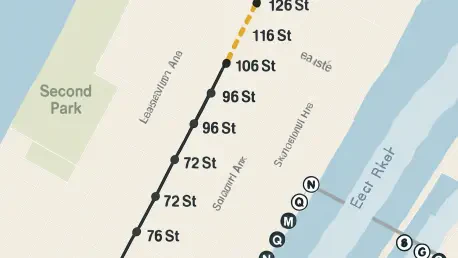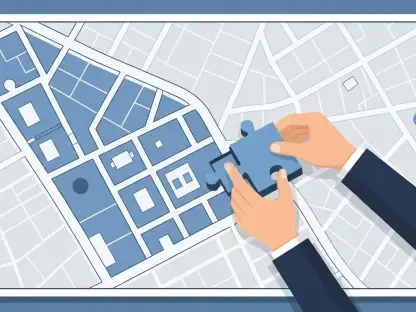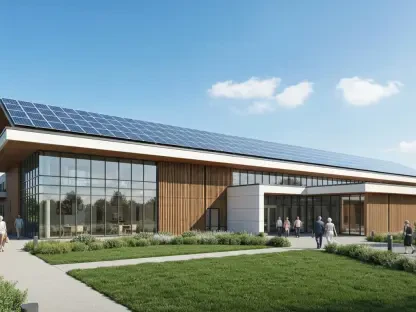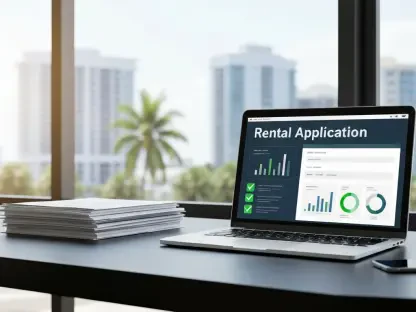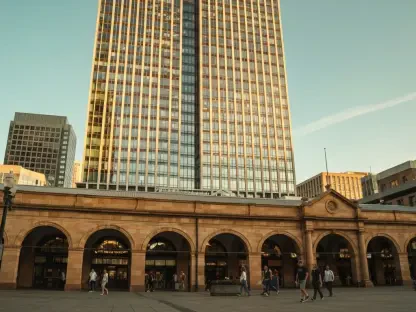In a transformative stride for New York City’s public transit system, the Metropolitan Transportation Authority has embarked on a monumental project that promises to reshape commuting in East Harlem. With a staggering $1.97 billion contract awarded for tunneling work, this initiative marks a pivotal chapter in the ongoing expansion of the Second Avenue Subway. This ambitious endeavor, part of a larger $6.99 billion phase, aims to extend the Q line northward, addressing long-standing accessibility gaps in one of the city’s underserved neighborhoods. The significance of this development lies not only in its scale but also in its potential to drastically reduce commute times for thousands of daily riders. By delving into the complexities of this project, from cutting-edge technology to strategic partnerships, a clearer picture emerges of how urban infrastructure can evolve to meet modern demands while balancing cost and efficiency.
Advancing Urban Transit Infrastructure
Tunneling Challenges and Technological Innovation
The scope of the tunneling work under this historic contract is nothing short of extraordinary, representing the largest such undertaking in MTA history. Awarded to Connect Plus Partners, a joint venture between Halmar International of Nanuet, New York, and FCC Construction of Madrid, Spain, the project involves excavating a new tunnel segment between 116th and 125th Streets. This effort will pave the way for the future 125th Street Station while also retrofitting an existing tunnel from decades past for the 116th Street Station. The technical demands are immense, with tunnel boring set to occur 35 to 120 feet below Second Avenue using colossal 750-ton machines equipped with 22-foot diamond-studded drill heads. Such advanced equipment underscores the role of innovation in overcoming the geological and logistical hurdles inherent in urban tunneling, ensuring precision and safety in a densely populated area.
Beyond the machinery, the project’s complexity is heightened by the need to navigate existing underground infrastructure while minimizing disruption to the surface community. This balancing act requires meticulous planning and execution, as even minor missteps could lead to significant delays or safety concerns. By integrating modern engineering solutions with strategic foresight, the MTA aims to set a benchmark for future subway expansions. The decision to reuse pre-existing tunnel segments, expected to save approximately $500 million, further highlights a commitment to fiscal responsibility without compromising on quality. This approach not only addresses immediate project needs but also serves as a model for cost-effective infrastructure development in other metropolitan regions facing similar challenges.
Community Impact and Accessibility Gains
One of the most compelling aspects of this subway expansion is its anticipated impact on East Harlem residents, who have long grappled with limited transit options. Upon completion, the extended Q line is projected to serve an additional 110,000 daily riders, cutting commute times by up to 20 minutes for many. This reduction in travel duration is more than a mere convenience; it represents a significant improvement in quality of life, offering better access to employment, education, and healthcare opportunities across the city. For a community often overlooked in transit planning, this development signals a shift toward equitable urban mobility that prioritizes underserved areas.
Moreover, the broader social and economic benefits of enhanced connectivity cannot be overstated. Improved transit infrastructure often catalyzes local business growth, as increased foot traffic and accessibility draw investment into previously isolated neighborhoods. The ripple effects of this project could extend well beyond immediate ridership numbers, fostering a more vibrant and interconnected East Harlem. As the MTA pushes forward with this initiative, the focus remains on ensuring that these benefits are realized through careful community engagement and transparent communication about construction impacts and timelines. This proactive stance is essential for maintaining public trust and maximizing the project’s long-term success.
Strategic Planning and Future Milestones
Project Timeline and Phased Execution
A clear and structured timeline underpins the success of this massive subway expansion, with key milestones already mapped out for the coming years. Early preparation work is slated to commence later this year, setting the stage for heavy civil construction to begin in 2026. The critical phase of tunnel boring is expected to start in 2027, with Connect Plus Partners targeting completion by September 2032. This long-term horizon reflects the intricate nature of the work, which demands patience and precision to ensure safety and functionality. Each phase of the project has been carefully planned to minimize disruptions while steadily advancing toward the ultimate goal of enhanced transit service.
In addition to the tunneling contract, this expansion is part of a broader phased approach involving multiple agreements. An initial $186.6 million contract was awarded earlier for utility relocation and construction oversight, while two more contracts for station buildout and system fit-out remain in procurement and design stages. This staggered strategy allows the MTA to address immediate priorities while maintaining flexibility for future adjustments based on funding or technical developments. Such foresight is crucial in managing a project of this magnitude, ensuring that resources are allocated efficiently and that each component aligns with the overarching vision for improved urban transit.
Funding Mechanisms and Global Collaboration
Financing a project of this scale requires innovative solutions, and the MTA has turned to mechanisms like New York’s congestion relief zone tolling program to partially fund this phase of the expansion. This approach not only secures necessary resources but also ties infrastructure investment to broader urban policy goals, such as reducing traffic congestion and promoting sustainable transportation. By linking funding to such initiatives, the MTA demonstrates a forward-thinking mindset that could inspire similar models in other cities grappling with transit funding challenges. The emphasis on creative financial strategies ensures that ambitious projects remain viable despite tight budgets.
Equally noteworthy is the international collaboration driving this effort, as exemplified by the partnership between local and global firms within Connect Plus Partners. This blending of expertise brings diverse perspectives and proven methodologies to the table, enhancing the project’s overall quality and efficiency. The synergy between domestic and international stakeholders highlights a growing trend in infrastructure development, where globalized approaches are leveraged to tackle local challenges. As this initiative progresses, it becomes evident that such partnerships are instrumental in navigating the technical and logistical intricacies, setting a precedent for future endeavors in New York City and beyond.
